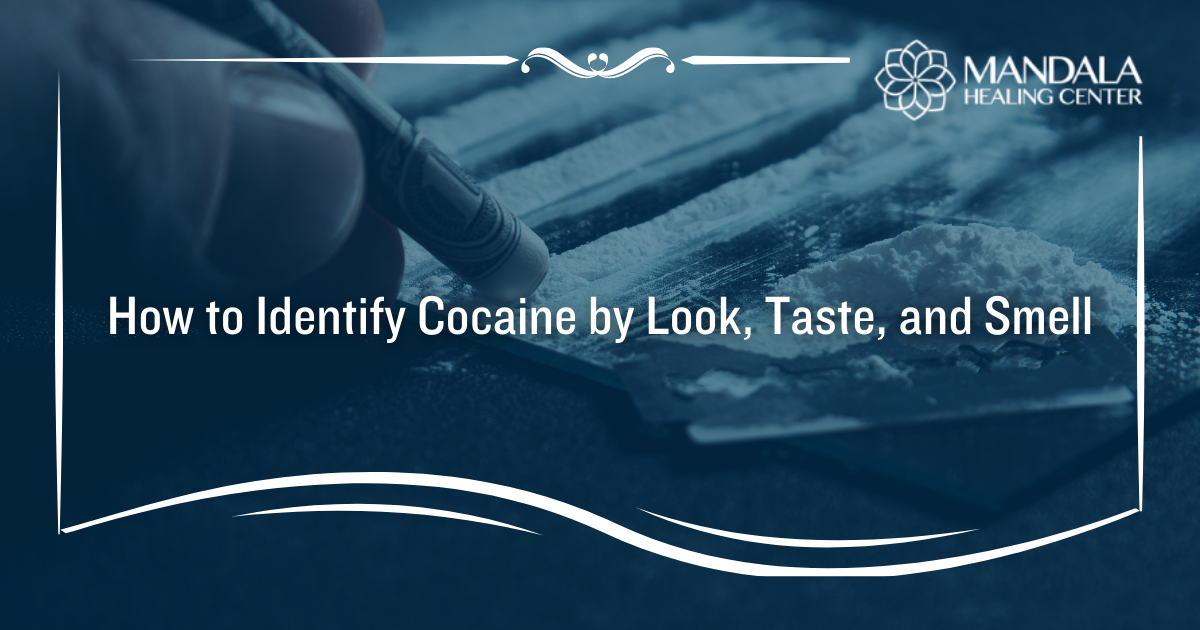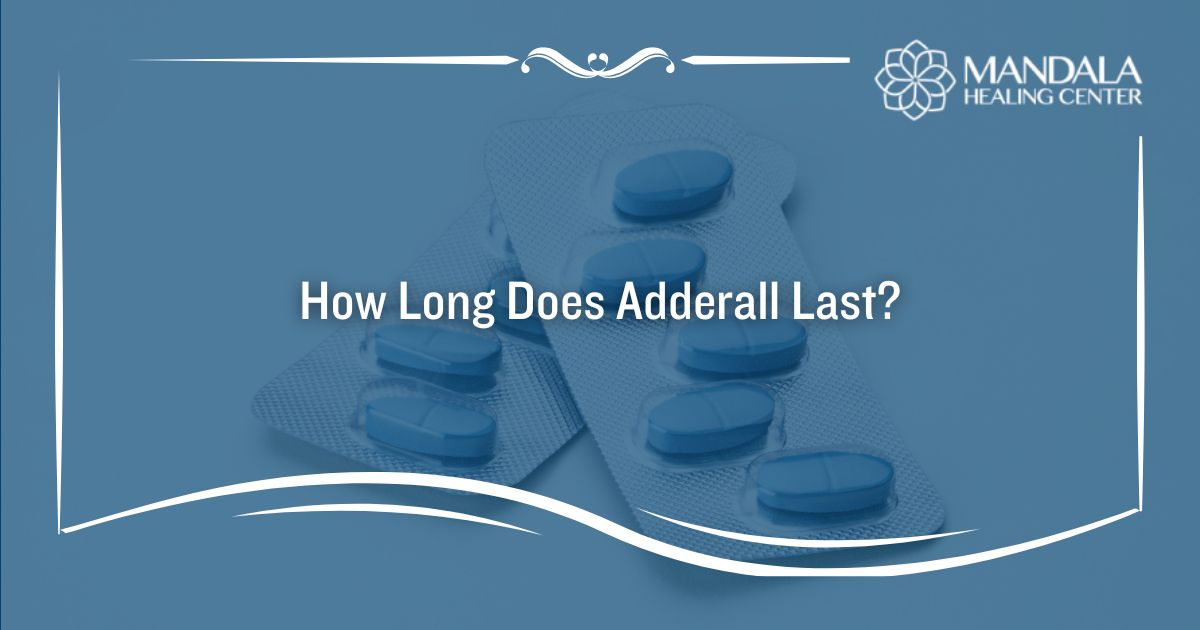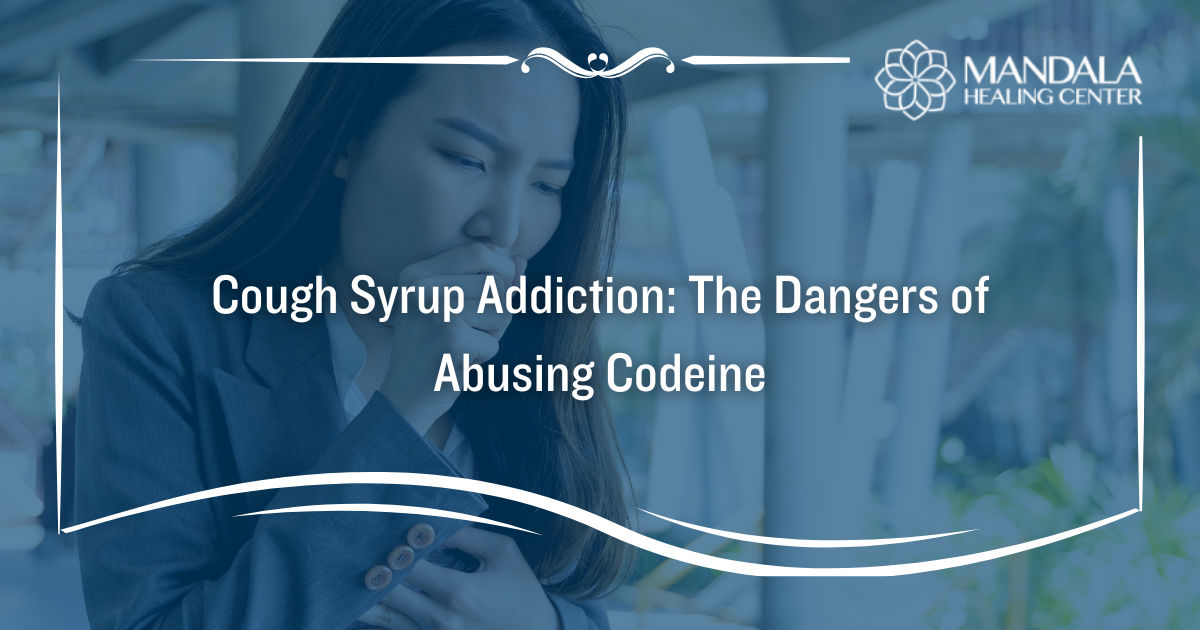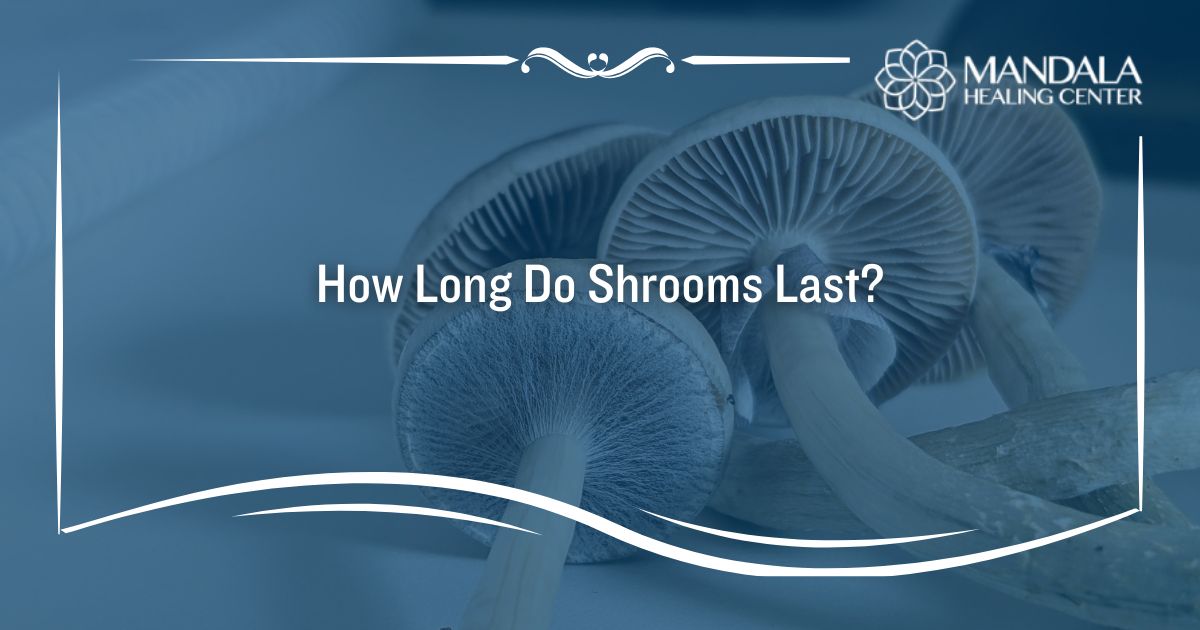Cocaine is a powerfully addictive drug derived from the leaves of a plant native to South America, known as coca. Cocaine is made into a fine, white powder that people typically snort to experience a rush of energy and euphoria.[1] This substance affects the brain by increasing dopamine levels, which are responsible for motivation and reward.
Because cocaine affects the pleasure and reward system, individuals who use this drug quickly become addicted. The rush of dopamine floods the brain’s reward circuit, reinforcing drug-seeking behavior and causing regular cocaine users to become hooked on the drug.
Cocaine abuse can be extremely dangerous, as many people cut the drug with other dangerous drugs to make more money off of their product. This could lead to accidental overdoses and other medical emergencies.
Knowing how to identify cocaine by look, taste, and smell can help drug users and their families identify the drug, prevent overdose, and get the appropriate help.
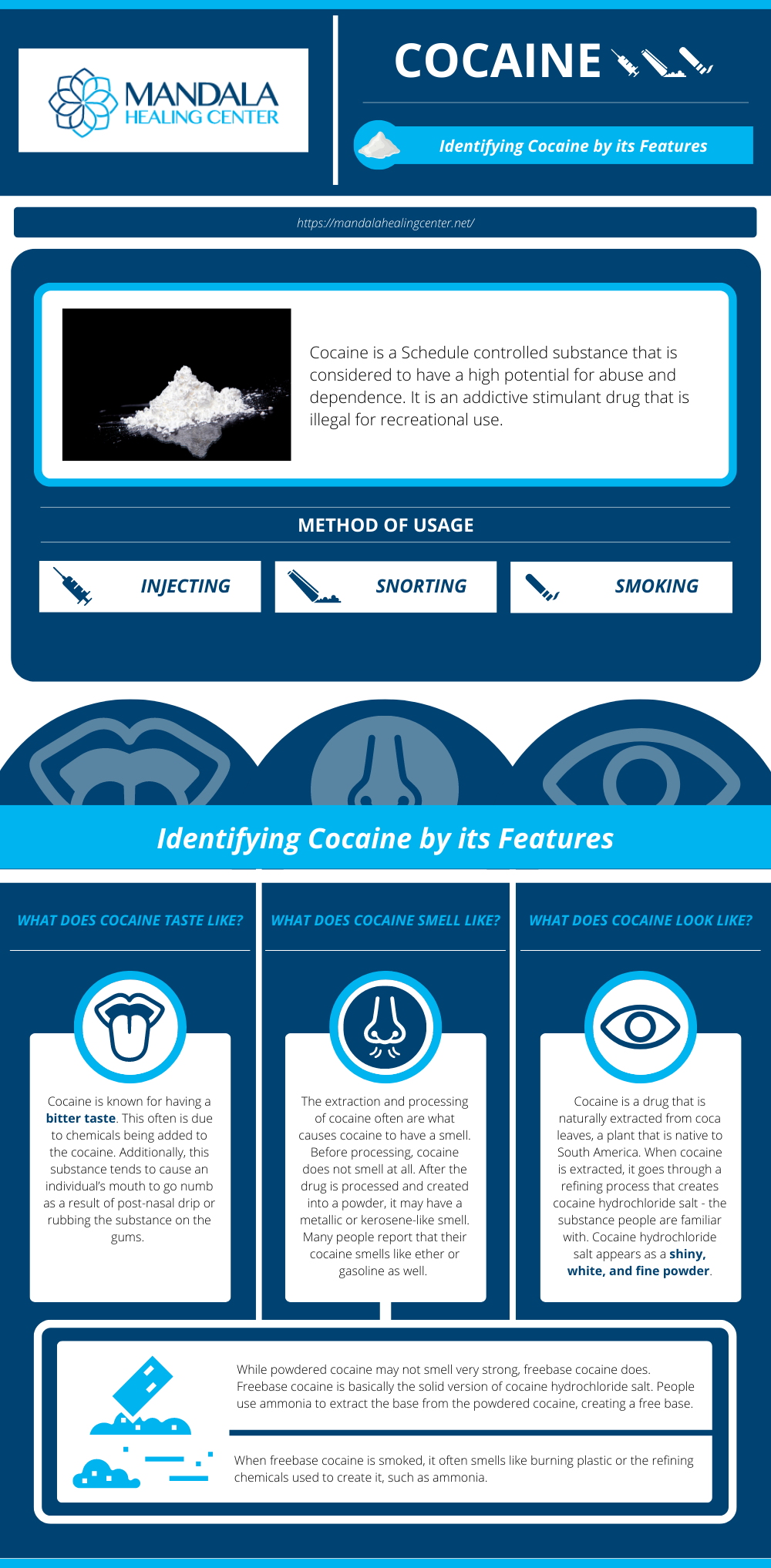
Identifying Cocaine by its Features
Knowing how to identify cocaine by look, taste, and smell depends on being aware of the characteristics to look for and understanding how to tell its purity. Using cocaine that has been adulterated can lead to physical harm and mental health effects that are less than desirable, making it imperative that people are educated on this matter.
What Does Cocaine Look Like?
Cocaine is a drug that is naturally extracted from coca leaves, a plant that is native to South America. When cocaine is extracted, it goes through a refining process that creates cocaine hydrochloride salt – the substance people are familiar with. Cocaine hydrochloride salt appears as a shiny, white, and fine powder.[2]
Street names for cocaine were created due to how it looks. Some of the street names include:
- White girl
- Snow
- White
- Flake
- Pearl
- Blizzard
- Blow
If cocaine is fake or impure, it may appear off-white in color. People have also reported seeing yellow, pink, green, and other variants of colors in their cocaine. Discoloration of cocaine is caused by additives or other substances being added to the powdered form of the drug.
It is important to note that sometimes, people use additives that are the same color as cocaine to hide the fact that the drug has been cut with something else.
What Does Cocaine Taste Like?
Cocaine is known for having a bitter taste. This often is due to chemicals being added to the cocaine. Additionally, this substance tends to cause an individual’s mouth to go numb as a result of post-nasal drip or rubbing the substance on the gums.
It is almost impossible to taste cocaine without actually using the drug. The taste is most noticeable once the substance is snorted or ingested orally and then absorbed through mucous membranes in the nose or mouth.[3]
What Does Cocaine Smell Like?
The extraction and processing of cocaine often are what causes cocaine to have a smell. Before processing, cocaine does not smell at all. After the drug is processed and created into a powder, it may have a metallic or kerosene-like smell. Many people report that their cocaine smells like ether or gasoline as well.
While powdered cocaine may not smell very strong, freebase cocaine does. Freebase cocaine is basically the solid version of cocaine hydrochloride salt. People use ammonia to extract the base from the powdered cocaine, creating a free base.
When freebase cocaine is smoked, it often smells like burning plastic or the refining chemicals used to create it, such as ammonia.
Factors that Affect The Look, Taste, and Smell of Cocaine
If the color, consistency, texture, or smell of cocaine is different from what was described above, it may be adulterated. This means that other substances were added to the cocaine to make it less pure. Drug manufacturers and dealers do this to create more products, allowing them to make more money off of the cocaine they are selling.
The following substances are common additives found in powdered cocaine:[4]
- Cornstarch
- Sugars
- Flour
- Baby powder
- Caffeine
- Quinine
- Baking powder
- Baking soda
- Epsom salts
- Talcum powder
- Lactose
- Thiamine
- Vitamin B
Most of the above-mentioned substances are white in color, which is why people use them as an additive for cocaine. Other substances like fentanyl may be used as a cutting agent for cocaine, which makes buying cocaine on the street extremely dangerous. Fentanyl is a powerful opioid drug that can cause life-threatening overdoses even when taken in small amounts.
Drug users can use at-home testing kits to ensure their cocaine does not contain dangerous, deadly substances like fentanyl. These kits allow people to test their drugs to see what substances are found within them, preventing them from accidentally taking cocaine that is filled with fentanyl or other dangerous drugs.
Finding Help for Cocaine Addiction
If you or a loved one suffer from cocaine addiction, it’s time to seek professional help. Cocaine is a powerful and dangerous substance that could lead to medical emergencies such as heart attack, stroke, and overdose. Due to these dangers, it is better to receive treatment sooner rather than later.
If you require cocaine addiction treatment, contact Mandala Healing Center today. We can provide you with the tools you need to successfully gain and maintain long-term recovery.
References:


